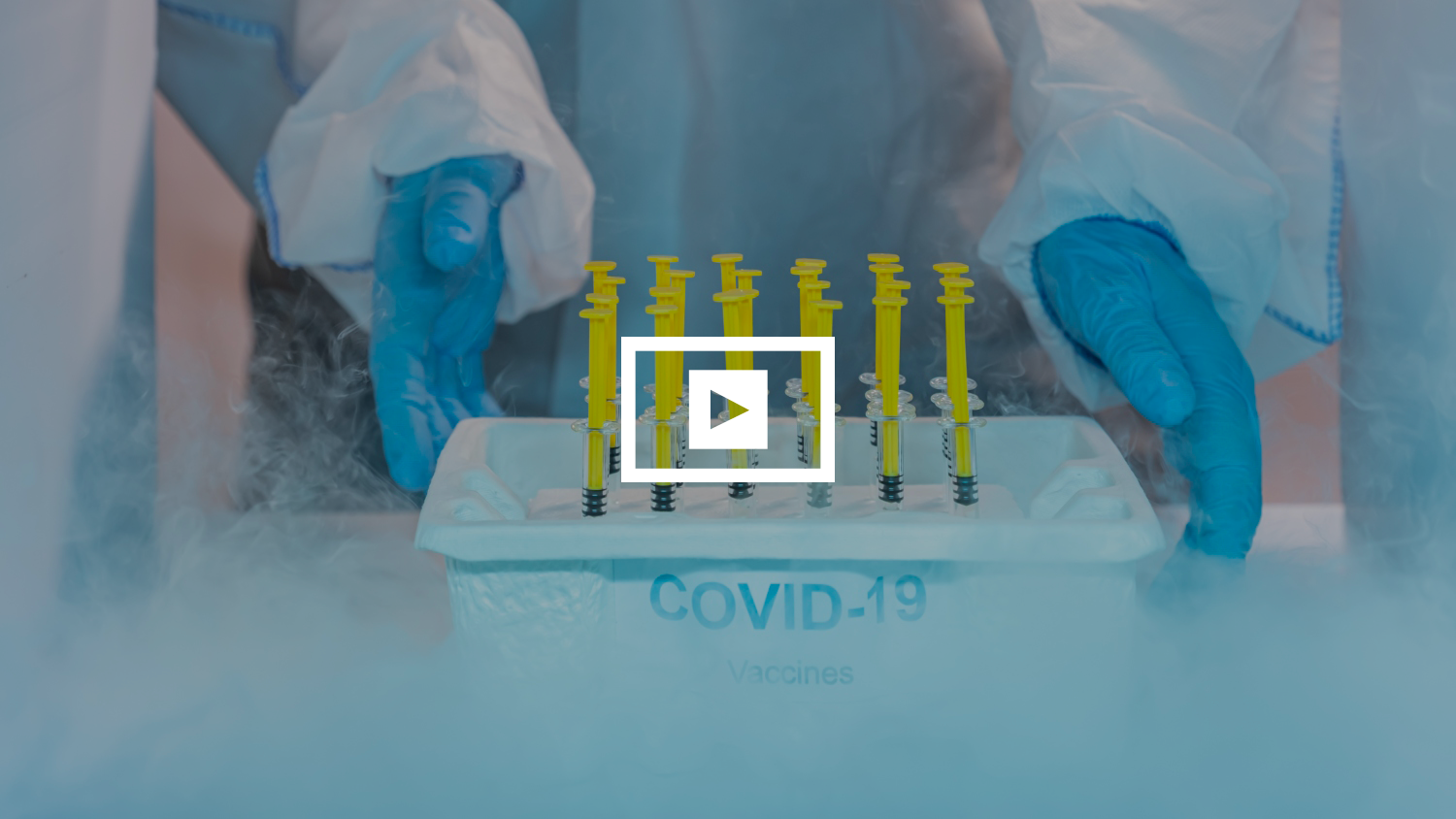Key Takeaways from our Vaccine Supply Chain Webinar on December 16

As the Pfizer vaccine is rolling out across the country this week, Major Dan Finkenstadt and I delivered a webinar, in which we identified a list of possible concerns and “hiccups” that may lie in store for distribution of the COVID vaccine. These possible disruptions were identified through our own personal discussions with subject matter experts, reviews of current government “Operation Warp Speed” strategy documents, conversations with state procurement officers, as well as discussions with manufacturers in the healthcare sector.
You can view the recording of the webinar and our key takeaways below.
Major takeaways from the discussion
1) The vaccine supply chain is a national security issue – the entire process from raw material to disposal is a possible point of attack. Counterfeiters, hackers, scammers, and others are all pursuing the “liquid gold”, hoping to make a quick buck. Security of the vaccine at every stage of the distribution, through to last email, is imperative to ensure that fraudulent activity does not occur.
2) Telling state, local, tribes to develop micro plans doesn’t make them happen or ensure coordination will happen. There are plenty of references in the the Operation Warp Speed “From the Factory to the Frontlines” document that alludes to collaboration on “micro-plans” at the local and state level. There are few details provided in this document and in our mind, lacks the level of planning that is needed to ensure the flawless delivery of the vaccine. There is also the discussion of building an IT infrastructure to measure and monitor the injection of vaccines, but again, this system does not exist. Given the reputation for healthcare data quality to less than stellar, this also remains to be seen.
3) Not all locations are logistically prepared to receive and administer. In particular we went through a mapping of the cold chain warehouse locations and there were significant gaps around the country especially in rural areas of the country. This will render distribution in a cold chain environment difficult for these rural areas and there have been few specific solutions identified for these regions. From the discussions we’ve had with the Homeland Infrastructure department we concluded that all the cold storage warehouses on our map can facilitate working temperature up to -20 degrees, this is standard. Only a small percentage of them accommodate temperatures up to -50 degrees, as they use blast freezing. However, this percentage is not known. And hardly any of them can go up to -70 to -90 degrees, leaving a big gap in the storage capabilities for the Pfizer vaccine.
4) We need to vaccinate the value chain. Many of the providers that work in the vaccine supply chain need to be vaccinated, or the supply chain will fail. For instance, there is a real shortage of CDL truck drivers, and not having drivers will lead to shortfalls. We also need to ensure that the people administering the vaccine are vaccinated, or there won’t be enough service workers. Similarly, the janitorial staff, maintenance staff, and grocery workers are all critical services that we need to operate the vaccine value chain, so we need to ensure that they are safe and won’t shut us down.
5) Temperature control is a major headache for the entire supply chain once it is manufactured. Once the vaccine is thawed it can be stored for a maximum of 5 days without sub-zero temperatures, and it cannot be stored again at the same temperature. So having an agile set of responders and vaccination personnel is critical The replacement of dry ice without guidance/expertise during the transportation along with exposure to light can act as a catalyst to decay. Another bottleneck is the transportation of dry ice, which is in high demand, and is rapidly emerging as a crucial logistics issue. To make matters worse, the U.S Dept of Transportation notes that the shipping of dry ice is hazardous over the air, as it releases co2 and under pressure, it can explode. so, getting dry ice in record time given its necessity can be difficult.
6) We need tracking at the individual app level and we need to consider how starting a vaccine series immobilizes individuals. The lack of systems that are available to monitor the deployment of the vaccine is breathtaking. There really is no way to understand if individuals are coming back for their second shot, do we know if they are in the waves being vaccinated, and how do we understand and monitor the secondary effects of the vaccine. Currently there are few systems deployed addressing these issues. At the state level, a few apps such as in NC will track contact tracing, and there are apps such as the Rymedi app to track testing at Clemson University. We need more of these types of apps to better track and monitor vaccines, as well as track the injection and administration to patients.
7) We have to build a communication plan to encourage vaccinations and traceability while balancing the need for individual privacy, freedom and health security. Too many people in the US (60%) do not want to take the vaccine. There is a fundamental distrust of the government and the vaccine, that it is somehow related to autism or other nonsense. There is a strong need to develop a “marketing” plan to individuals, that goes beyond a single blanket statement, but appeals to specific customer segments, and delivers a customized personalized message to convince them that the vaccine is the right thing to do, and is for their own good. This may involve social media, engagement with local religious leaders, community leaders, and other segments. It will be critical to ensure that everyone gets this vaccine.
We welcome any comments or thoughts on these insights, and look forward to continued discussions on these topics!
- Categories:


